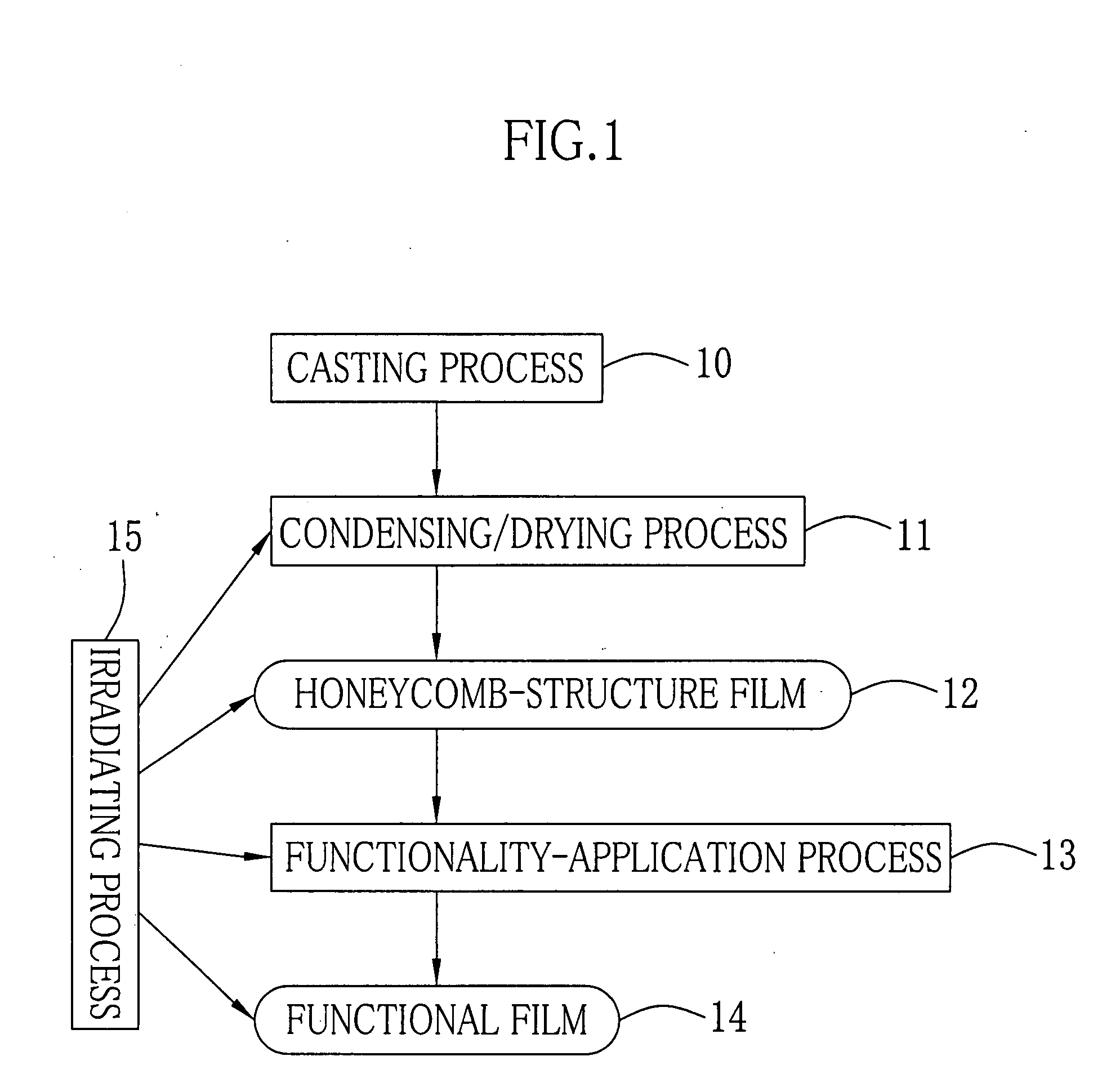Producing method for film
a film and production method technology, applied in the direction of coatings, flat articles, other domestic articles, etc., can solve the problems of increased cost, complicated procedures, and difficulty in making a large area of plates
- Summary
- Abstract
- Description
- Claims
- Application Information
AI Technical Summary
Benefits of technology
Problems solved by technology
Method used
Image
Examples
example 1
[0098]Experiments 1-5 were performed by using the film-producing apparatus 20 shown in FIG. 2. In the experiment 1, poly-.ε.-caprolactone having average molecular weight of 70,000-100,000 shown in chemical formula (1) and amphipathic polyacrylamide shown in chemical formula (2) were mixed at a weight ratio of 50:1 to be used as a solute for the polymer solution. Dichloromethane were used as a solvent. The polymer solution 21 was prepared so that the concentration of the polymer compound became 0.2 wt. %. An endless stainless plate was used as the casting belt 26. The drying condition and the temperature of the casting film 40 until reaching the condensation zone 32 were controlled such that the viscosity at the time when the casting film 40 entered the condensation zone 32 was 0.8 cp. The temperature of the air 35 in the condensation zone 32 was set at 30° C., while the dew point was set at 20° C. The surface temperature TL of the casting film 40 at the time of entering the condensa...
example 2
[0101]A flexible film formed by polyethylene terephthalate without a property of absorbing the solvent (methyl acetate) was used as the support. The honeycomb-structure film was produced such that the thickness L1 of the film was 4 μm, the diameter D1 of the void was 6 μm, and the time for passing through the condensation zone 32 was 58 seconds. Other conditions were the same as the example 1. The evaluation by using the SEM was ±8%, so that the evaluation was ∘.
example 3
[0102]A flexible film formed by cellulose acylate having a property of absorbing the solvent (methyl acetate) was used as the support. The honeycomb-structure film was produced such that the thickness L1 of the film was 0.3 μm, and the diameter D1 of the void was 0.35 μm. Other conditions were the same as the example 2. The evaluation by using the SEM was within ±7%, so that the evaluation was ∘.
PUM
| Property | Measurement | Unit |
|---|---|---|
| relative speed | aaaaa | aaaaa |
| relative speed | aaaaa | aaaaa |
| time | aaaaa | aaaaa |
Abstract
Description
Claims
Application Information
 Login to View More
Login to View More - R&D
- Intellectual Property
- Life Sciences
- Materials
- Tech Scout
- Unparalleled Data Quality
- Higher Quality Content
- 60% Fewer Hallucinations
Browse by: Latest US Patents, China's latest patents, Technical Efficacy Thesaurus, Application Domain, Technology Topic, Popular Technical Reports.
© 2025 PatSnap. All rights reserved.Legal|Privacy policy|Modern Slavery Act Transparency Statement|Sitemap|About US| Contact US: help@patsnap.com



